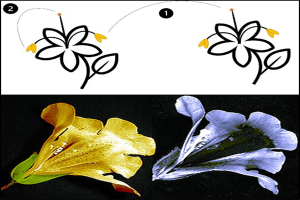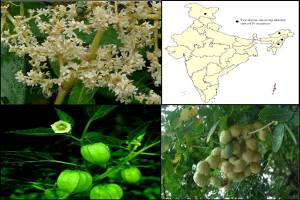EDITORIAL

Welcome to the last issue of the year 2020. This year will be memorable for all of us due to COVID-19 disease and as a milestone for changes in social-economic practices around the world. Despite having gloomy presentation of the disease and its consequences on the world population, we have also learnt how to continue our daily chores under this stressful environment. The newsletter is also a similar endeavor.
Our issue commences with the article on wild food and their importance in the life of “wild citizens”. The author, a veteran activist in promoting sustainable practices, shares his personal experience gathered from multiple places of Odisha, and Bangladesh on the survival strategy of the forest dwellers during the shortage of main food resources. The narrative also highlights the critical issues like, discrepancy in public distribution system, food availability and, knowledge on local food map. Like the wild food in the first article, our second article tells us about the generation of the food, but in a different way. We all know about the pollination, the key mechanism behind fruit production but hardly aware on the diverse structures and strategies to keep it fully functional. This illustrative article nicely builds the story around the forms and colors of the flowers, nocturnal pollinators, nectar robbers, energy conservation and impact of environmental pollution. Hope our readers will enjoy these articles for their core facts and lucid description.
The wild food section is portrayed with the species of Physalis, Pithecellobium, Plantago and Polygonum with their nutritional quality and culinary acceptance. Physalis with its inflated calyx, Pithecellobium with coiled fruit and Polygonum with creamy-white flowers are parts of the childhood memory for many of us with rural or peri-urban background. Their ubiquitous distribution and lesser known food values are providing opportunities to tap their economic potential and expand our food preference. Similarly, the glimpses of nature tell about Aam aadmi, Bamboo satellite, Neolithic pest and Mazri palm, a range of diverse ideas and practices.
Hope this issue satiates your hunger for knowledge. We are also inviting our readers to contribute to our newsletter either article or snippets. A collective approach is always welcome for sharing and development of knowledge. Wish you all a happy and better new year 2021.
Happy reading
RAJASRI RAY
ARTICLES
The uncivilized food
A rainy day of the end of August. Raindrops kept pouring over the green waves of rice fields. It seems that there would be a good harvest this year. Ranu looked outside the door, came back lazily and peeped into the drum, where she stores rice from previous years. She looked bothered – the stock would last for just three more days! This is not only about Ranu’s family. Many…
The world of flowers
Beauty is in the eye of the beholder, but the beauty of flowers seems to be universal. Flowers are associated with every occasion of human life as symbols of expression, making them somewhat of a living emoticon. Culture and geography greatly influence the specificities of flowers for each occasion although this is quickly being replaced by a monoculture of hybrid flowers offered by the expanding floriculture industry. These flowers represent…
WILD UNCULTIVATED EDIBLE PLANTS OF INDIA
Wild uncultivated edible plants of India
Physalis minima L. Family: Solanaceae Physalis minima or little gooseberry is one of the common plants in agricultural fields and rural roadsides. Considered as a weed, this herbaceous member has wider culinary acceptance among the tribes of Southern India. Communities like, Toda, Kota, Kurumba, Paniya, Irula, Badaga and Lambanis use the leafy shoot as vegetable in different forms viz., boiled with spices, cooked with tubers (potato), etc. Similarly, fruit is…
GLIMPSES OF NATURE AND CULTURE
Glimpses Of Nature And Culture
Aam-aadmi (The Mango people) “Mango” word itself is one of the identifiers of India. This magical word entangles with countless stories, history, innumerable local landraces, sprawling economy, and regional competition, a summary formed of diverse social-cultural and economic network. Let’s listen to a great live story of “Migration for Mango” that cuts across international border. Our story starts in the coastal Maharashtra region especially, in Ratnagiri, Raigad, and Sindhudurg districts,…
—————————————————————–




